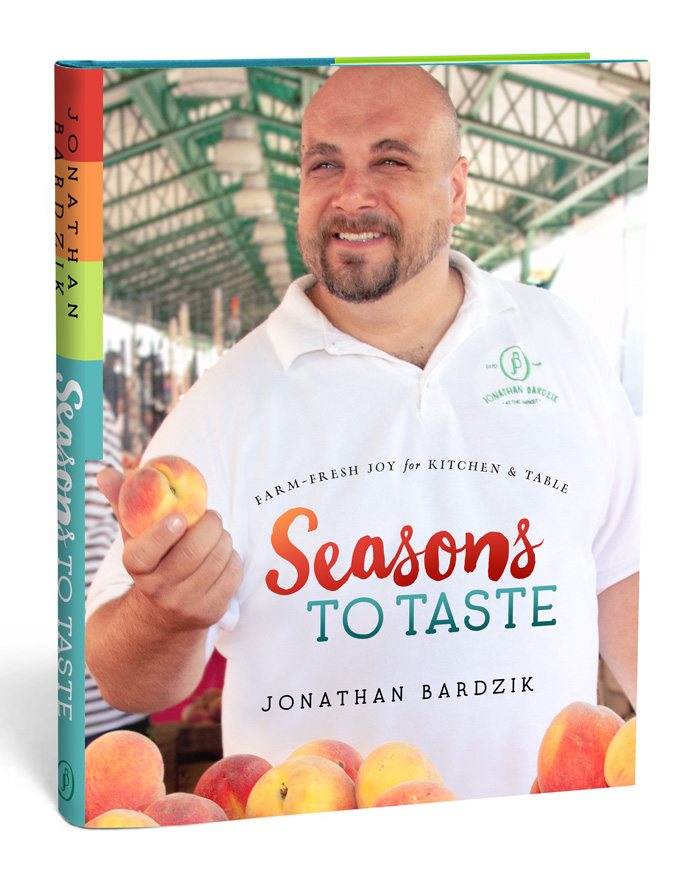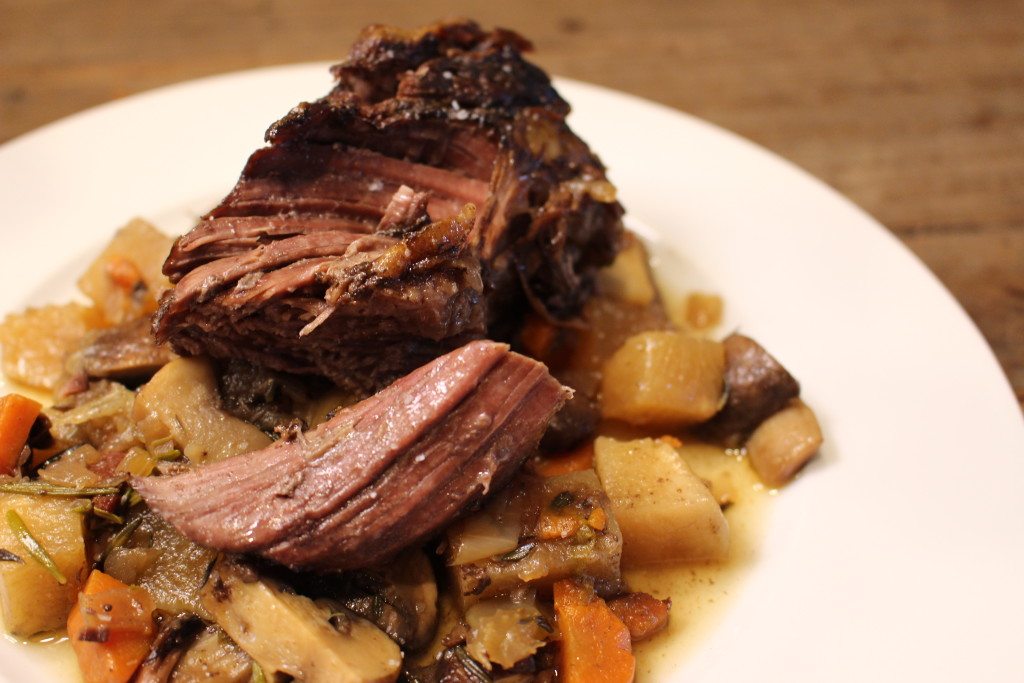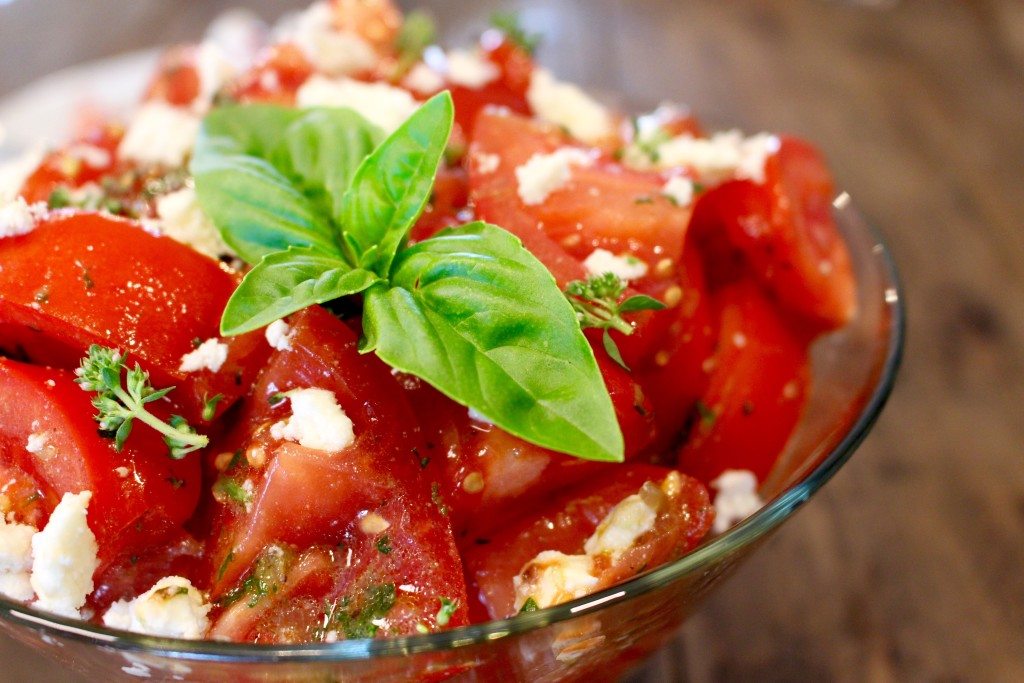As someone who comes from a culinary background… err my mother was a chef so I always had good food at the table let’s say that, I continue to be amazed by the level of talent that is in the modern world of cooking today. I recently found out about this wonderful, handsome and talented storyteller, cook and author in the D.C. area by the name of Jonathan Bardzik who just released his second cookbook called “Seasons To Taste”, which is a fantastic and illustrious book about how you can take the best farm and vegetable ingredients and make delicious meals out of them. I recently sat down with Jonathan to discuss his dive into the culinary world, inspirations that got him there, favorite dishes from his new cookbook and where he sees his hopeful future going. Take a look.

How did you fall into the culinary universe in the first place?
Four and a half years ago, I took a look at my life and it was great. I was recently married to Jason, living in Capitol Hill in an amazing neighborhood, a job that I loved and kind of stuck my head out and thought “What’s the next big adventure of my life?”, and that thought process led on a Saturday morning in late July of 2011 to my first live cooking demonstration ever at Historic Eastern Market in Washington, D.C. Later that passion has turned into my full time career.
In your experience, is there really much of a difference in people who just know how to cook versus ones that are classically trained?
For sure! I am not classically trained; I have taken two three and a half hour retail classes in my life. I have spent twenty good years of working my way through cookbooks and asking a lot of questions and learning from people so I’ve been self taught with an enormous network. I think that one of the biggest differences in classical training is that I’ve found that as I’ve started to think about food this way is to think about food more structurally. It means that you stop thinking about a series of ingredients and recipes and steps and start thinking about techniques and components through building blocks. So you’re not taking this meat and searing it and then putting it in liquid and cooking it in a lower temperature at a long time, you are braising it. And once you start understanding that conceptually, a whole lot of things come together under that idea but it changes the way that you cook because you are able to look at ingredients with a lot more creativity.

Who have been some of your biggest culinary inspirations both growing up and currently?
Without a doubt my mother was probably the single biggest influence on me. She wanted nothing more in her life than to be a mother and a housemaker, so until I was four years old she baked most of the bread that we ate; she got our vegetables through our local farms and took creative risks although they don’t look as creative in today’s world. We have become so much more culinarily adventurous in society today that she was cooking quiche and vegetarian meals in the 70’s which was really cutting edge. Outside of that, there are a number of friends who as creative as they were in the kitchen what they gave to me was their confidence. They gave me the idea that you go into the kitchen and not worry about the results and to just go in there and do something fun while you are at it and you eliminate the threat of having to do it perfectly every single time.
My influences today are chefs like Deborah Madison & Alice Waters. Julia Child is an inspiration for me as she is as close as I will ever get to classical training. One other person if I could think of someone is Martha Stewart is because of the idea that life can and should be lived well and that should be accessible to everyone regardless of their means. We can achieve that by creating a simple meal each day with a simple table and taking sometime in the kitchen, and in doing so we can really elevate our quality of life and that is something that is really special.

From the looks of your cookbook you seem to have a very rich and hearty approach to a lot of your recipes. Is this how you want your viewers to see your kind of cooking?
You know, there are two factors that really drive the kind of cooking that I do. Number one, there are farm fresh seasonal food, and number two is the fact that most of the recipes that I create are designed to be presented at live market cooking demonstrations. Two things happen there- one, when you are using farm fresh seasonal ingredients, they taste great, and so it doesn’t take a lot of work for them to be delicious. The food is doing a lot of work for you. The other big advantage to this is that when I am cooking at a farm market I am typically standing on a sidewalk with a knife, a cutting board and a propane burner. There is no special equipment and you have about 20 minutes of tension before you want some food in front of you. So it’s gotta be quick, gotta be easy and gotta be simple.
What I look to do, and I think this is the other fun challenge of the farm market, is by the end of the season, by the end of the 12 weeks of summer, I have done just about everything with zucchini, tomatoes and green beans. So they get creative. I’ve done some demos for USDA this summer and the person who brought me in has seen me at the market before and now views me week after week. At week three she comes up to me and goes “So… you don’t actually do anything. You are here and have very few ingredients and don’t do too much to them. And there is this dish, and then I taste it, like this is so simple, but then I taste it, and it doesn’t taste simple. It tastes complex and interesting and tastes like a restaurant dish”. So I think these pressures of having to reinvent these same ingredients week after week after week keeps them really interesting. I am always look for that way to add something a little unexpected and interesting to bring out the natural flavors of the ingredients that I am working with in a new way.

Your new book “Seasons to Taste” has you divide each section of it by season and list your favorite recipes in each. How did that concept come about?
I’ve been working with the farm market and almost everything that I cook is fresh from there now. I’ve gotten a lot more disciplined about in off seasons, particularly in the winter, and realized how much that was guiding what I was cooking. I found that was a much more natural way to organize things. So there are so many recipes you run across, and there is spring asparagus with fresh summer tomatoes and then some broccoli and cauliflower which is really great for fall and I look at these recipes and go “When are you going to get all these ingredients tasting good at the same time?” So it just made sense, now you can walk into a farm market or a grocery store and go “What looks good this week?” and get fresh, seasonal food and bring it home and then make a decision at that point about what it wants to become.

For each season, do you have a favorite recipe that you have developed?
Gosh, that is a tough one but yes, absolutely. I would say, the Pot Roast with Turnips & Mushrooms in the winter is awesome. I’ve found that not only is there seasonality in the ingredients but there is a seasonality in the way that we cook, and there is something about that slow cooked comfort in a winter dish that I really love. In the spring, there is a slaw in there with celery root and a poppy seed dressing. I came up with it a few years ago. Spring was really late and so we had mostly winter storage festivals in the fall market and I was trying to figure out how to make them taste like spring. It is just light, fresh and I did some research on poppy seed dressing and I found that you can thicken them with onion instead of mayonnaise. So it keeps the flavor really light and fresh with some fennel chopped into it. I serve it for Easter each year, it is so simple.

Summer has so much amazing food, but the Fresh Herb Tomato Salad on page 169… it’s so simple. It is tomatoes and fresh feta and a nice sharp, mustardy vinaigrette and the flavors just explode. It is everything the summer should be. When we were shooting it for the book we ended up shooting it twice in one day, I wasn’t happy with the first shoot. So we had two batches around and I was doing recipe testing that night and had a whole chicken in the fridge. So I cut the chicken up, put it in a baking dish and put both batches of tomato salad around it and shoved it in the oven for an hour and that became a new recipe. So it is just so versatile and delicious and everything that a summer dish should be. The ingredients are shining bright without needing a lot of help from you. For the fall, the Pumpkin Dumplings with the miso sauce that goes over them is so good. Pumpkin is an ingredient that I don’t think we cook with enough. You’ve got these bright, orange pumpkins that are great for holiday decorating and they are completely useless in the kitchen. There are so many wonderful, heirloom pumpkins available at the farmers market. I was looking for inspiration as I do recipe development every week, and I kept seeing these recipes for Pumpkin that started with “Pumpkin is really bland, so this is what we did to make it flavorful”. I have seven different types of pumpkins right now that I am going to be roasting over the next few weeks, and anytime I take a tasting for those the flavors are rich and diverse so I love celebrating the flavor of the pumpkins and this is such a neat way to do it. The red, miso paste is kind of a fun, surprise ingredient and is one that I learned about using from Deborah Madison cookbook “Vegetarian for Everyone”. It is much deeper and more complex than white or yellow miso and gives kind of a beefy flavor to dishes quickly and adds that punch of flavor and puts it over the top.
In conclusion, what are your ultimate hopes for this cookbook?
I really saw this cookbook as my next opportunity to share who I am and what I think about food and the effect it has in our lives and connects us with other people to bring joy. I want to get it out to as many people as possible to share that message and it is the next step in building a larger audience. From the beginning, I really wanted to share this message that food can bring joy and can help us live a well lived life and I wanted to do that to a national audience and this book is the next step in doing that.
Interested in getting “Seasons To Taste” and learning more about Jonathan? Check out his official page for more info.
